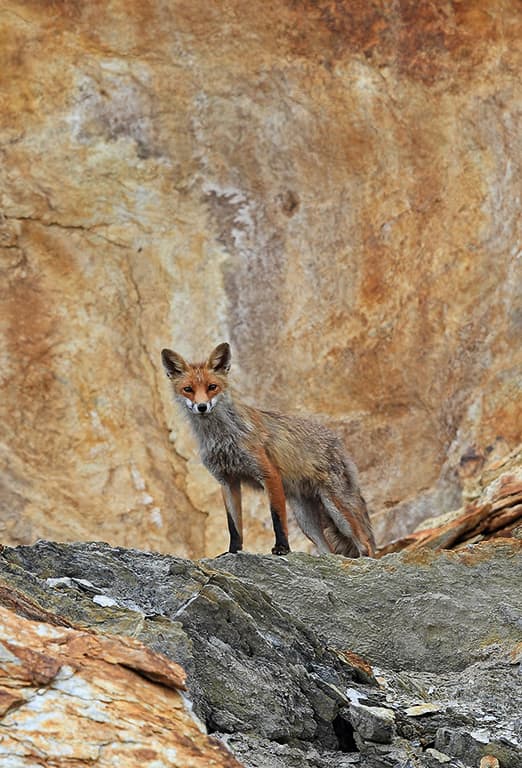The top ten images from Amateur Photographer of the Year (APOY), Round Two – Natural World, with comments by the AP team and our guest judge
Every year, the wildlife and nature round of APOY is one of the toughest to judge, because the standard is so high. Our panel shortlisted a huge range of images, reflecting not only the quality of entries but also the diversity of tastes. This month’s guest judge, wildlife photographer Ross Hoddinott (below).
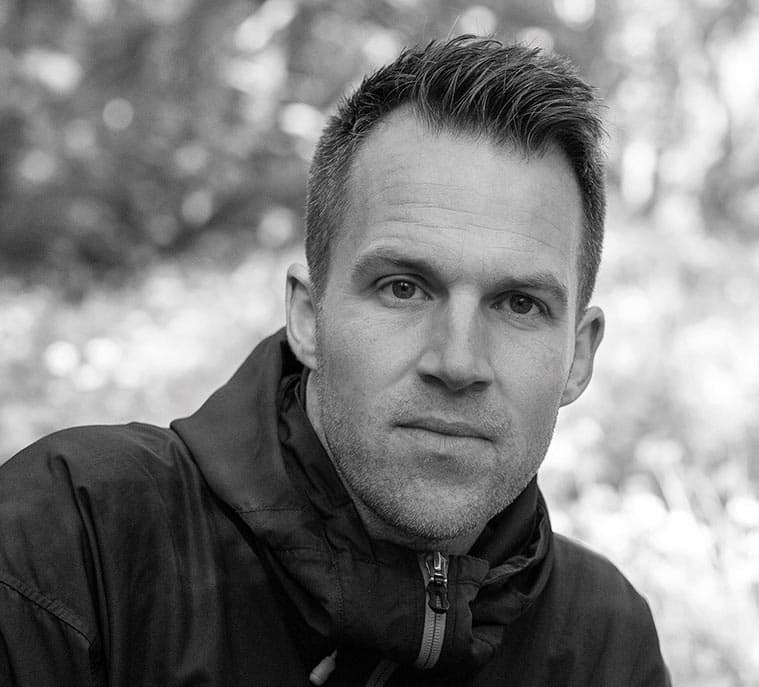
Ross was particularly impressed with the standard of entries, and admitted finding it tricky to narrow them down.
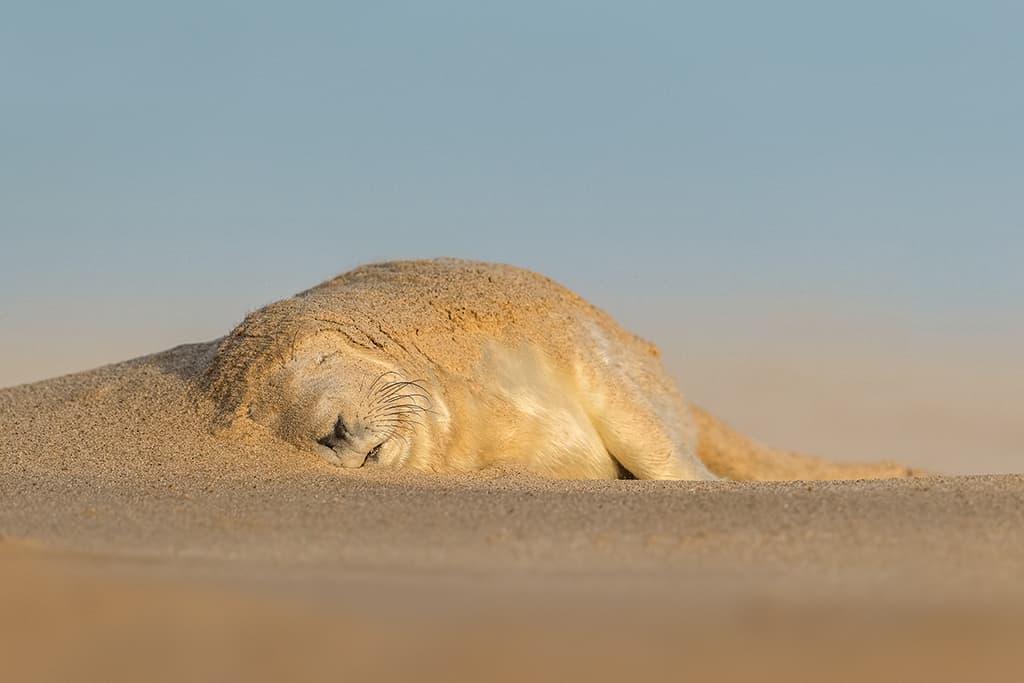
1 Jayne Bond, UK (100pts)
Canon EOS-1D X Mark II, 500mm, 1/6400sec at f/5.6, ISO 1250
Guest judge Ross Hoddinott says: ‘This is such a beautifully captured image. The soft, warm light spotlighting the seal pup is gorgeous, while the low viewpoint is intimate and inviting. The subject simply ‘pops’ from its surroundings thanks to the shallow zone of focus, and the seal’s whiskers are so sharp that it seems you could reach out and touch them.
I love the way this image highlights the harsh conditions these young animals have to contend with so early in their lives. The strong wind has partially covered this resting pup with sand and when you look at this shot, you can practically hear the wind whistling past and feel the sand and sea spray on your face.
It is an attractive nature shot that also tells a story – and it is a worthy winner of APOY Round Two. Well done!’

2 Juraj Bencik, Czech Republic (90pts)
Nikon Z 7II, 70-200mm at 135mm, 1/10sec at f/4, ISO 400
There’s something faintly surreal about this scene – as if it’s a still from a fantasy film. The silhouetted heron on the left is taking a step towards the cormorant on the right, just as an apparent explosion of fireworks takes place.
What it is, in fact, is the spray of water from a fish the cormorant has just caught, which it is shaking. There’s just enough detail in this shot for the viewer to create a picture of what is going on, while the absence of any foreground or background
detail concentrates the eye on the unfolding drama.
The obvious question that arises is, did the cormorant keep the fish, or did the heron move in and steal it?
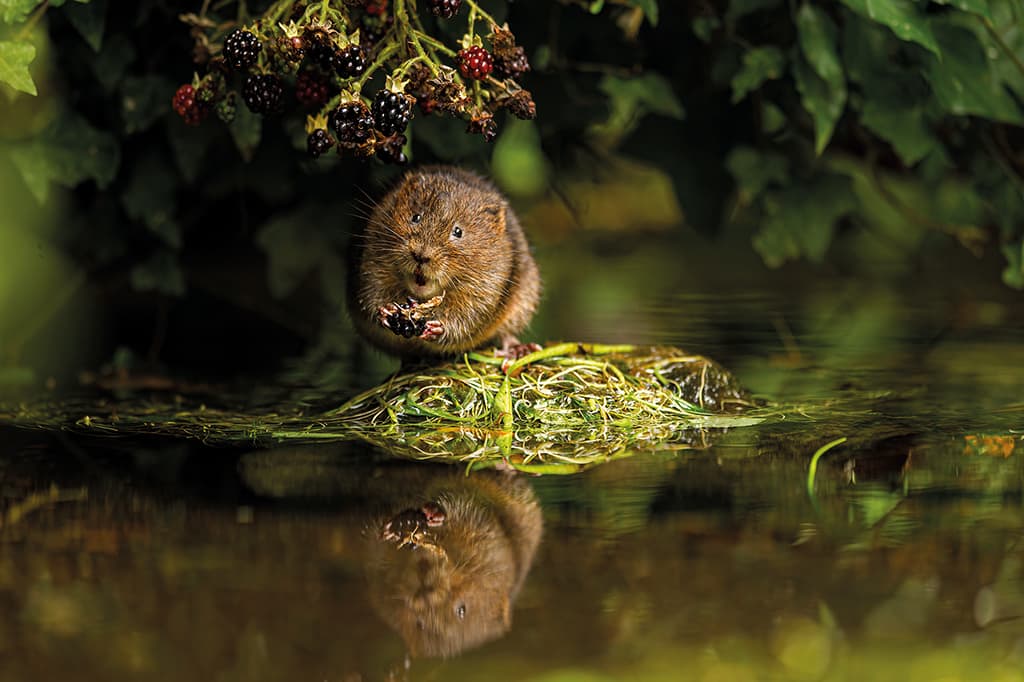
3 Jenny Hibbert, UK (80pts – Camera Club Highest Score)
Canon EOS-1D Mark IV, 300mm, 1/200sec at f/2.8, ISO 800
Many of the most successful wildlife shots aren’t simply straight portraits, but show an aspect of the animal’s behaviour. This charming image is a case in point, with it depicting the baby water vole helping itself to a few tasty blackberries from the overhanging branches. The timing is excellent, with Jenny capturing the small mammal just as it looks up, as if it thinks it might be told off by a parent.
The light is excellent, and brings life to the scene, showing up the vole’s beady eye, adding gloss to the tasty berries and giving the scene depth. The perfect reflection completes a very successful image, which was worth all the hard work it took to capture.
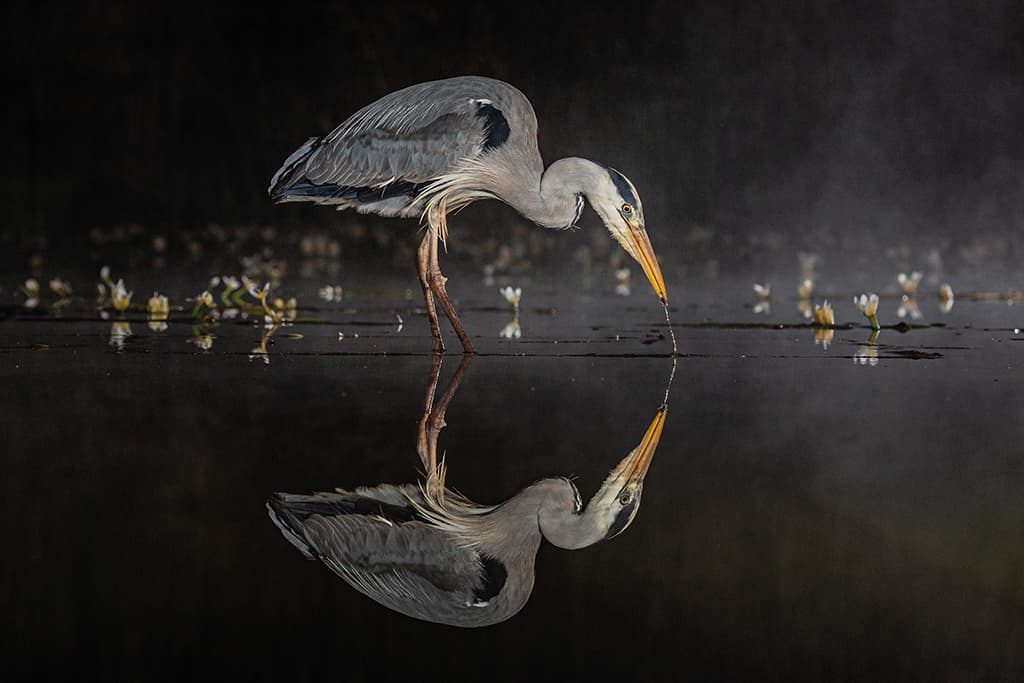
4 Dominic Beaven, UK (70pts)
Canon EOS 5D Mark III, 100-400mm at 176mm, 1/200sec at f/6.3, ISO 800
Capturing aspects of animal behaviour at night is a particular challenge, but when it’s done well it reveals something magical – probably because we are unaccustomed to witnessing what they get up to after dark. It turns out, it’s pretty much the same as what they do during daylight, but the inky blackness of the surroundings in this image make the heron stand out dramatically.
We can pick out every detail in its feathers, and almost feel as if we could reach out and touch it. As with so many successful images, this one is all about timing, and releasing the shutter just as the bird withdraws its beak from the water shows impeccable responses on Dominic’s part.
The thin stream of water, which joins its reflection on the lake’s surface, results in every element of the bird being connected with its upside-down replica. Without that small but important final touch, it wouldn’t have been nearly as successful. One to be proud of.

5 Wendy Eve, UK (60pts)
Nikon D850, 60mm, 1/125sec at f/8, ISO 100
It can be a little tricky to critique wildlife images without anthropomorphising their subjects, particularly when that subject looks as if it’s swum straight out of the set of Finding Nemo.
This spine-cheek anemonefish has been beautifully captured as it peeks out of its bright-green surroundings – the eye contact is great.
Wendy has done well to go in close, excluding any potentially distracting colour or texture from the frame, while placing the fish on the thirds keeps things classic and uncomplicated – and there’s a lot to be said for that.
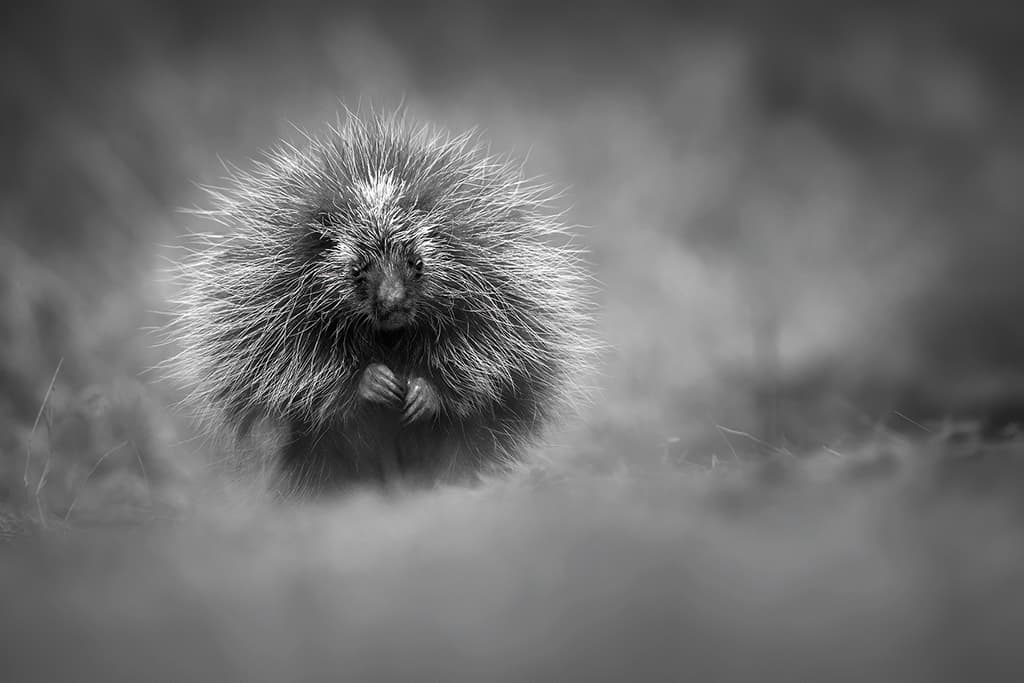
6 Joshua Galicki, USA (50pts)
Canon EOS-1D X Mark III, 600mm, 1/1000sec at f/4, ISO 4000
Converting a wildlife image to black & white is unusual and has to be done for the right reasons – and it’s worked very nicely indeed here. The expression on the pensive-looking porcupine’s face – which is complemented by its small, clasped claws – is emphasised by the monochrome conversion.
It definitely wouldn’t have had quite the same impact in colour. Getting right down to ground level is essential for that feeling of connection with the subject, and also allows the photographer to blur out any potential distractions in the foreground.
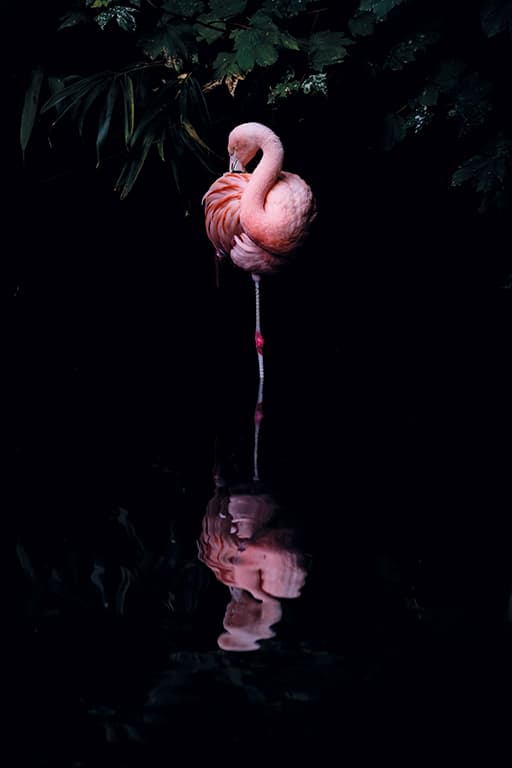
7 Stephen Borman, UK (45pts)
Sony A7 II, 70-200mm at 200mm, 1/250sec at f/4, ISO 100
What a gorgeous, dream-like image, which has been enhanced beautifully by the sensitive processing. Composing so that the flamingo is almost a straight line down the centre of the frame is a bold but very effective choice, and allows the viewer to concentrate on the pleasing reversed S-curve of the bird’s neck.
No more than the pink of the flamingo, the green of the leaves and the black of its surroundings is required here. Best of all, it was shot in Twycross Zoo, showing that great wildlife shots are accessible to almost anyone.
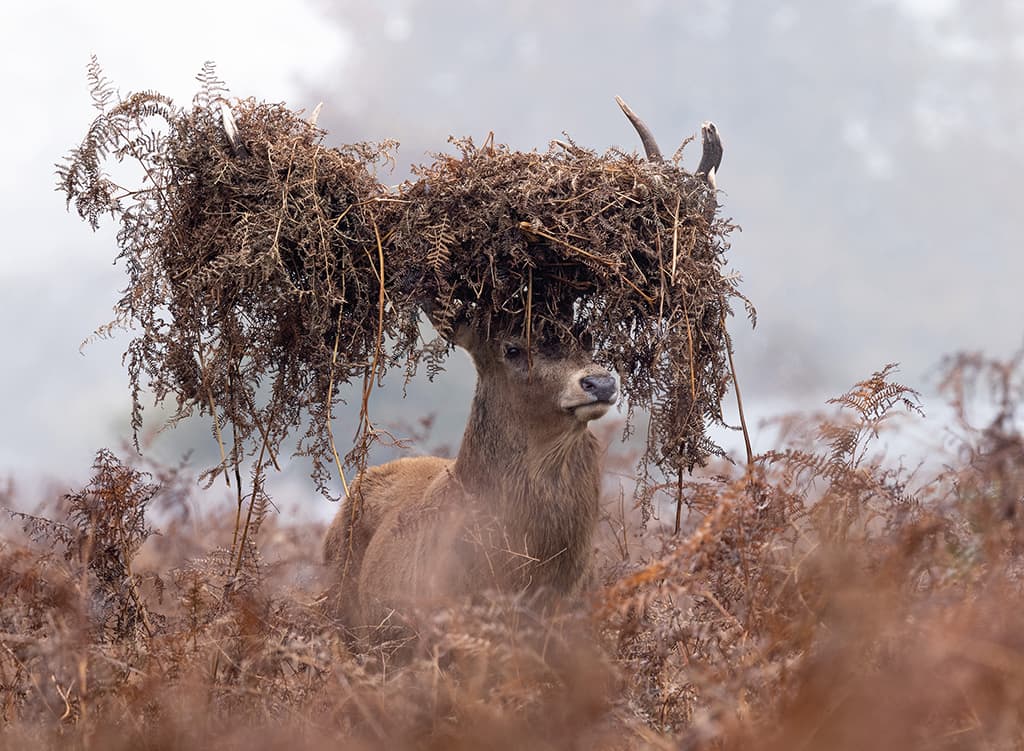
8 June Fox, UK (40pts)
Canon EOS R5, 100-500mm @ 500mm, 1/200sec at f/8, ISO 640
Some images have the ability to transport the viewer straight to the scene, and that’s very much the case here, with this dramatic and entertaining capture. We get a true feeling of what it must have been like to have seen this stag, with its bracken headdress, looming out of its surroundings.
Getting down low within the vegetation has meant June was able to blur part of the foreground, which gives a sense of being right in among the action, as well as depth. A great wildlife shot she should be proud of.
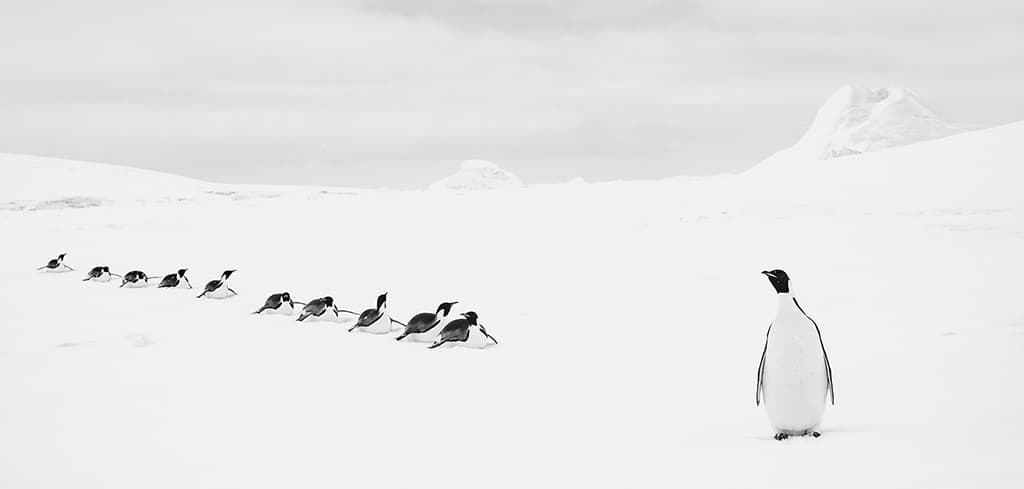
Christine Matthews
9 Christine Matthews, UK (35pts)
Canon EOS 5D Mark IV, 24-105mm at 50mm, 1/400sec at f/10, ISO 100
Photographing penguins must be like opening a box of Celebrations at Christmas – you never quite know which one to pick out first! So for Christine to have had the self-control and clarity of purpose to see and select this composition is admirable.
The line of penguins on their bellies alone would not have been enough, and neither would the solitary standing one. However, together, they create an eye-catching and memorable image. There’s just enough detail in the snowy hills on the horizon to give context and added interest, too.
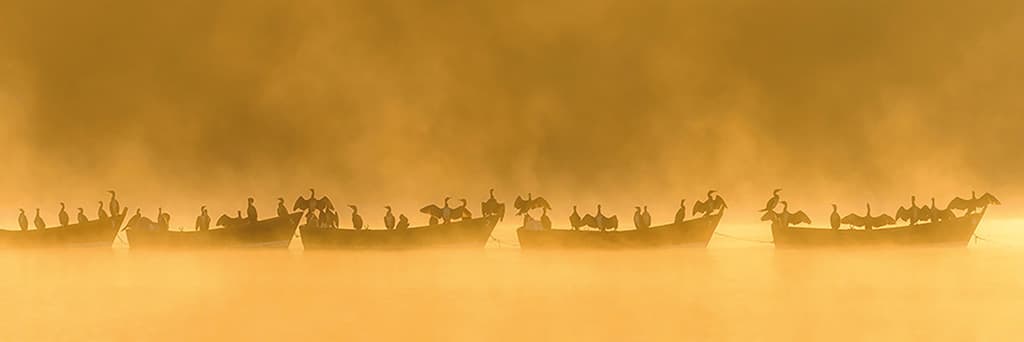
10 Robert Maynard, UK (30pts)
Nikon D850, 200-500mm at 500mm, 1/2000sec at f/8, ISO 800
There’s an astonishingly dream-like quality to this scene, which must have been quite something to behold. The golden tones of the sunrise, the mist rising from the water and the line of boats alone would have been appealing enough to any photographer, but to capture the vessels ‘inhabited’ by so many cormorants is magical indeed. It’s as if each individual bird has its own story to tell. Lovely.
Camera club competition
Adrian Davey UK (10pts)
Canon EOS 7D, 500mm, 1/640sec at f/5.6, ISO 200
In this year’s APOY, entrants can win points for their camera clubs – all you need to do is select your club from the dropdown menu when you upload your images. Whatever points you are awarded are then added to your club’s overall tally.
That’s what Adrian Davey of Launceston Camera Club did when he entered this excellent portrait of a fox, with the tones showing how beautifully the vixen blends into her mountain surroundings.
He received a Commended, earning him 10 points. Another member of his club, Chris Robbins, also received 10 points for his Commended image, while Ian Smith received 10 points for one of his shots in Round One, giving Launceston Camera Club 30 points in total and placing them joint 10th.
At the end of APOY 2021, the camera club with the most points wins a £500 voucher to spend at www.mpb.com. The highest-placed entry from a camera club member in this round was Jenny Hibbert’s water vole, which earned 80 points for Bridgend Camera Club.
Round 2 Winner, Young APOY: Shubhodeep Roy, India (100pts)
Nikon D5600, 18-55mm at 51mm, 1/320sec at f/9, ISO 100
If any image demonstrates that wildlife photography doesn’t have to be about frame-filling animal portraits in colour, it’s this one, which was overwhelmingly popular with our judges.
The humble pigeon is just as valid a subject as any glamorous – or more beautiful – creature. There’s a lot that can be read into this image, with the outstretched wings of the bird and its shadow symbolic of any number of things. The line of wires is a hugely important part of the composition, too. It’s clever, interesting, and full of drama. Well done.
The 2021 Leaderboards
With her winning image of the seal pup, Jayne Bond has leapfrogged Ian Bramham into first place, thanks to the 10 points she earned for her Commended shot in Round One.
At this stage, we have a lot of jointly placed entrants, but expect to see that separate out over the coming rounds.
Lucy Monckton now leads Young APOY, while Bridgend and Loughton Camera Clubs share first place at the moment.

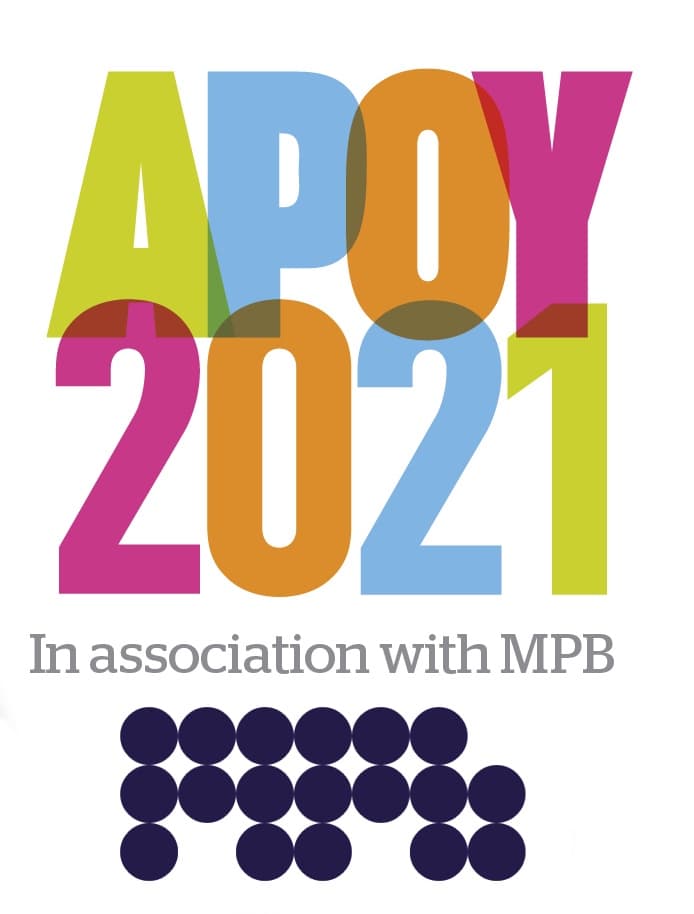
Winning kit from MPB
The gear our winners used can be found at MPB. Jayne Bond takes away a £500 voucher to spend at MPB thanks to her captivating winning image of a sleeping seal in a sand dune.

For this shot, she used a Canon EOS-1D X Mark II which, with its 20.2MP sensor and 14fps capability, is ideal for wildlife photography. MPB has several EOS-1D X Mark II bodies available on its website, starting from £1,614 and rising to £2,239, depending on its condition.

In second place, Juraj Bencik shot his eye-catching image using a full-frame mirrorless Nikon Z 7II. Its predecessor, the Z 7, with its 45.7MP sensor and ISO 64 to 25,600 range, can be picked up at MPB at a starting price of £1,689.

Jenny Hibbert’s very well-captured and engaging shot of a young water vole eating berries was shot using a Canon EF300mm f/2.8L IS USM. A superb lens for wildlife photography, its wide aperture is great for working in low light conditions, and MPB has a number of these in stock, ranging from £1,409 for a heavily used example to £2,229 for one in good condition.


